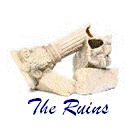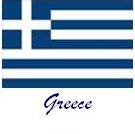Asia Minor, also called Anatolia, comprises all of the Asian part of Turkey. Turkey likes to think of itself as straddling east and west, modernity and history. Given that historically it's been a point of conflict between east and west over centuries it's a positive perspective to see yourself as now being a bridge between the two. While the vast majority of Turkey's land mass lies in Asia, Istanbul certainly lives up to the image of linking into Europe with, geographically, half in Asia and half in Europe, separated by water at the Bosphorous but with ready access between the 2 across a couple of bridges and plentiful ferries. Istanbul's commercial and historical centre lies in Europe, while a third of its 13.5 million population lives in Asia.
The Turkey leg of the tour began in Istanbul, with a long drive down the Gallipoli Peninsular, across the Dardanelles Strait, and down the west coast with some hinterland diversions on the drive to Marmaris on the south west coast as the departure point for Greece.
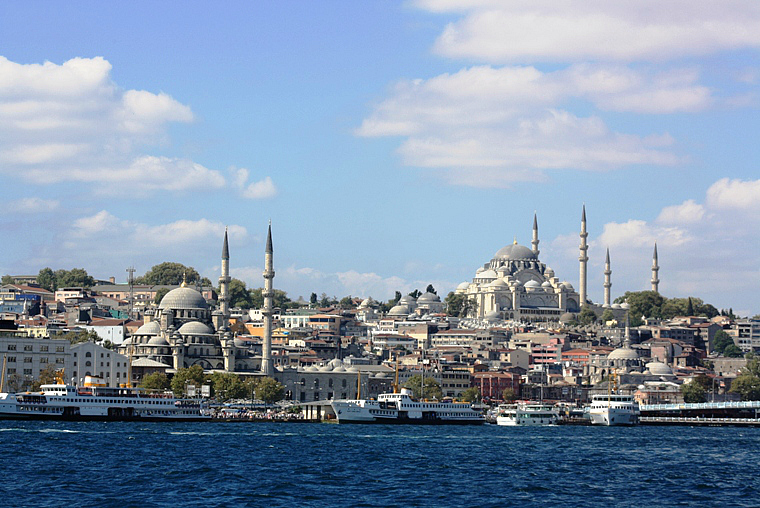
The Fatih district snapped from a ferry on the Golden Horn that separates it from the Beyoglu district. These two districts make up Old Istanbul, both being on the Eurpoean side of the Bosphorus. The Yeni Cami Mosque (new mosque) in the foreground, dating from 1557 and adjoining the exotic Egyptian Spice Markets, with the Suleymaniye Mosque, the largest in Istanbul and also dating back to the mid 1500s, in the background.
Istanbul
Bucket List Rating 




Established in 660 BC as Byzantium, it developed to become one of the most significant cities in history. Following its reestablishment as Constantinople in 330 AD, it served as the capital of four empires: Roman, Byzantine, Latin and Ottoman. It was instrumental in the advancement of Christianity during Roman and Byzantine times, before the Ottomans conquered the city in 1453 and transformed it into an Islamic stronghold and the seat of the last caliphate.
Despite the 3 monolithic mosques that dominate the architecture in old Istanbul, the place was pretty low-key Islam. Although headscarves were common, women appeared to be free to wear what they wanted. Not a single ninja was seen. The 5 times-a-day call to prayer broadcast over competing loudspeakers became just background noise after a couple of days, and alcohol was readily available. The Turks brew good beer and make overpriced, so-so wine. A booze shop is located right opposite our hotel.
The Fatih district corresponds to what was, until the Ottoman conquest, the whole of the city, across from which stood the Genoese citadel of Galata. Genoese fortifications were largely demolished in the 19th century, leaving only the Galata Tower, to make way for northward expansion of the city. Galata is now a part of the Beyoglu district, which forms Istanbul's commercial and entertainment centre. Despite that, the best place to stay would definitely be the Fathir district. Great views of the Bosphorus and across the Golden Horn to Beyoglu, plenty of places to explore with good cheap eats everywhere. The highlights of the Hippodrome, St Sophia, Blue Mosque, Topkapi Palace, Egyptian Spice Markets and Grand Bazaar are an easy walk away, and the Beyoglu district is then readily accessible on foot, by tram, taxi or ferry.
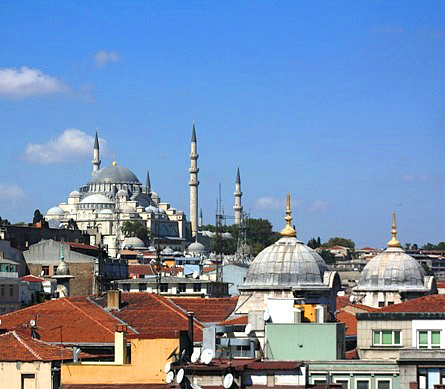
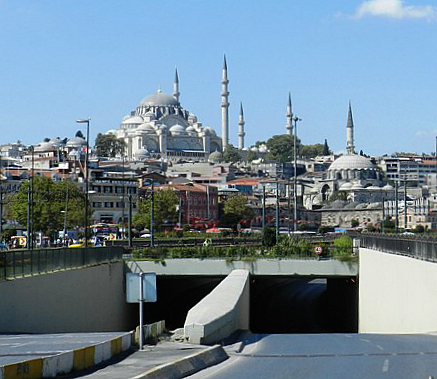
The Suleymaniye Mosque from our Hotel Neorion rooftop - THE place to chillax in Istanbul. Top notch staff, service, facilities and location. Rated the best hotel in Istanbul by Trip Advisor.
The Suleymaniye Mosque and Yeni Cami Mosque from down by the water front.
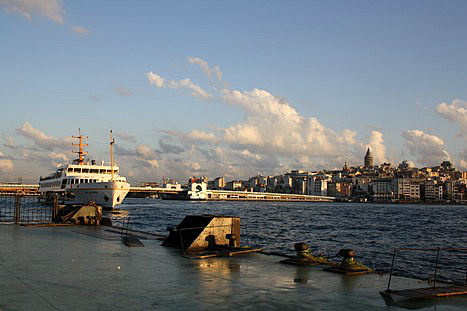
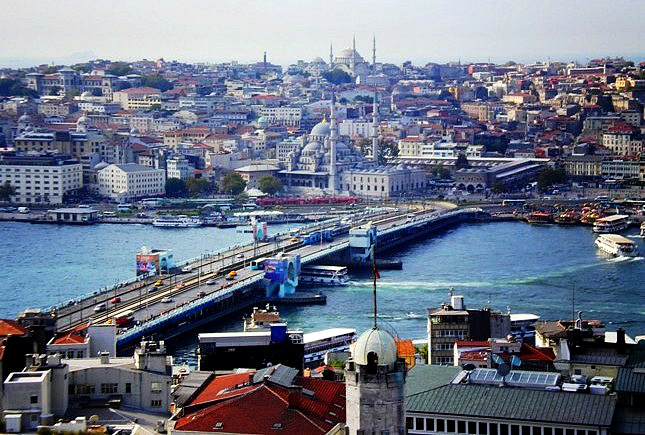
Morning 1 in Istanbul. The Galata Tower is on the skyline, being the vantage point for the photo on the right which looks back in the opposite direction.
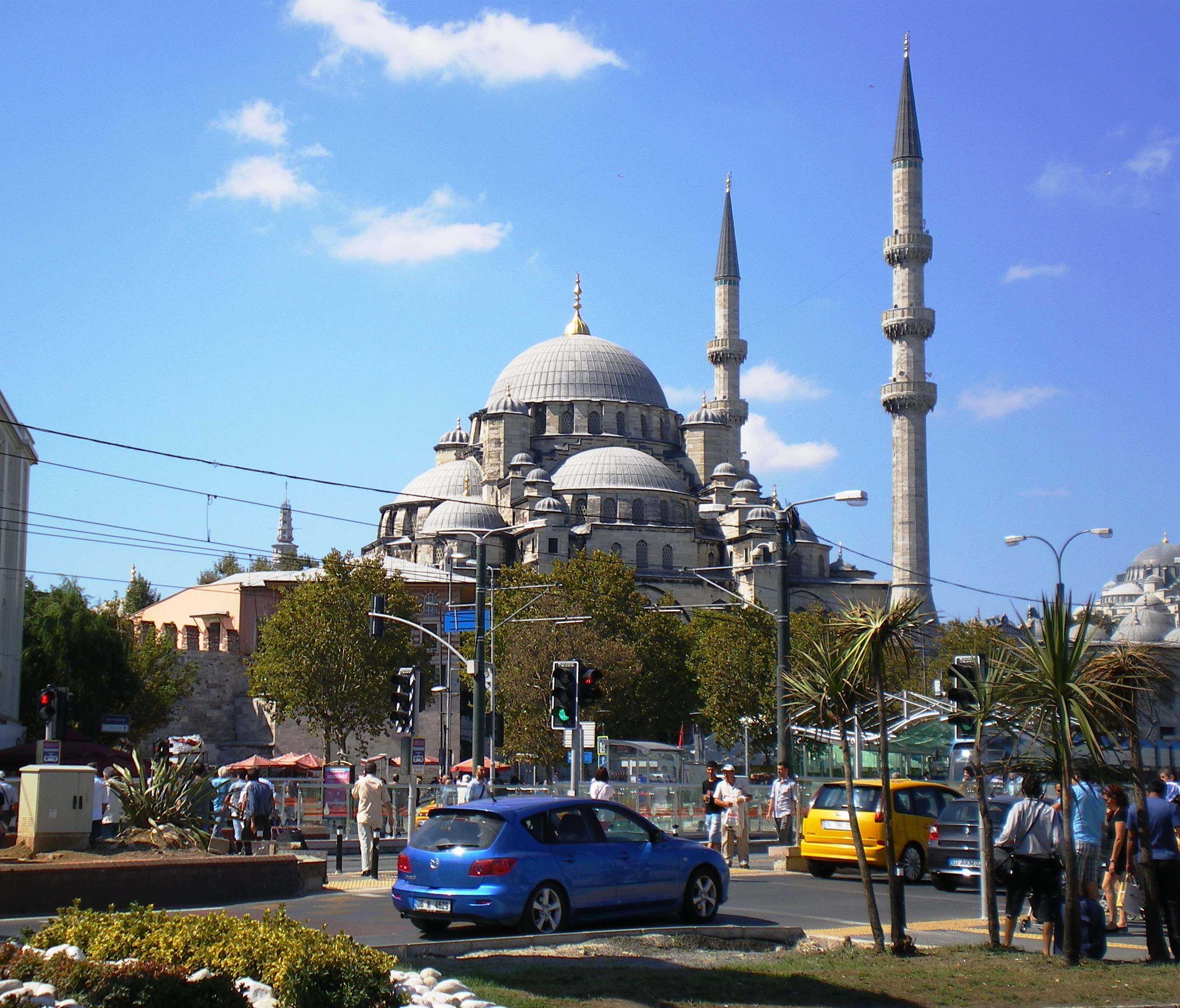
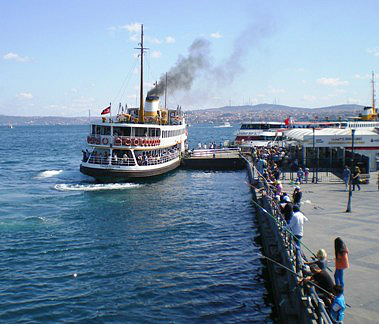
Yeni Cami Mosque.
A commuter ferry on the Goldern Horn looking up the Bosphorus. Asia on the right, and Europe on the left.
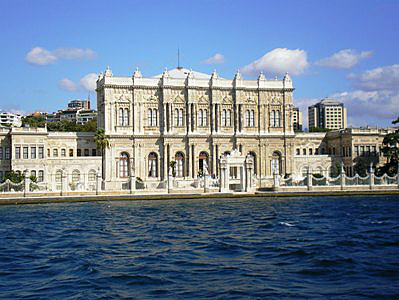
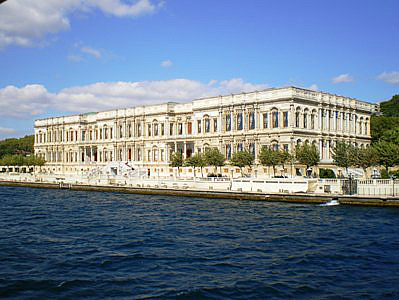
Dolmabahçe Palace in the Beşiktaş district of Istanbul on the European coastline of the Bosphorus strait, served as the main administrative center of the Ottoman Empire from 1856 to 1922.
Çırağan Palace, a former Ottoman palace, is now a five-star hotel located on the European shore of the Bosporus between Beşiktaş and Ortaköy
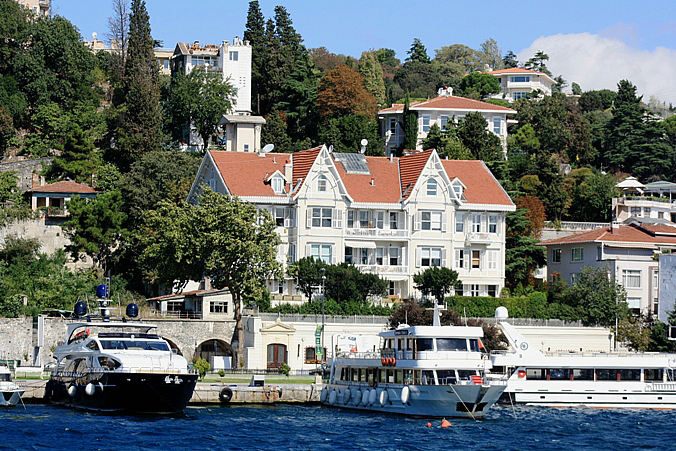
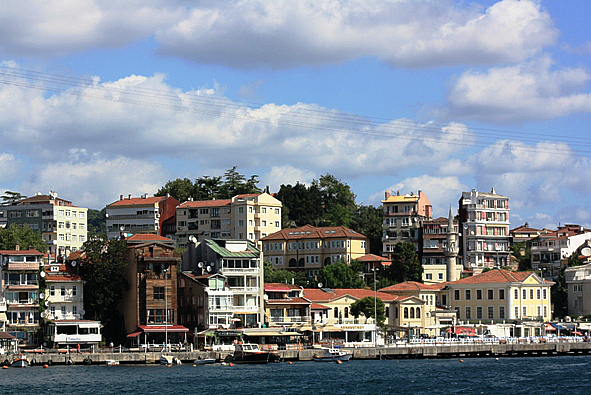
Nice neighbourhoods along the Bosphorus on the European side; they would not look out of place in any wealthy western city.

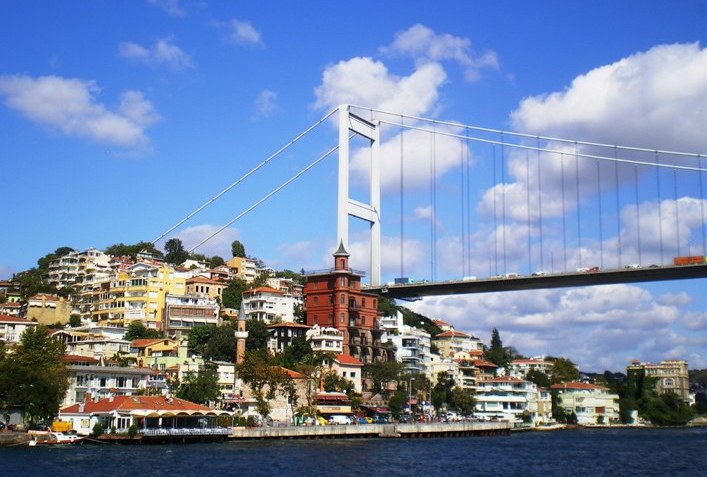
The prosperous Bospherous. Lined with mansions, fancy apartments and impressive old government edifices. The habitat of the Turkish moneyed set.
The western end of the Fatih Sultan Mehmet Bridge (1988) that stretches across the Bosphorus to the Asian side which is also edged with the large and ornate grand piles along the waterfront.
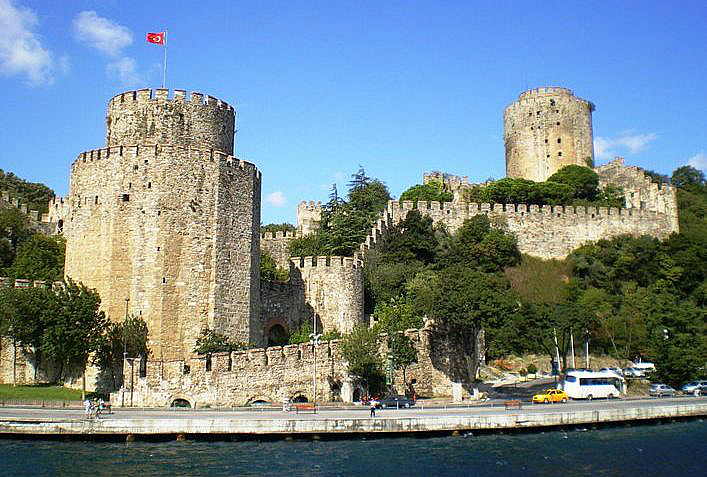
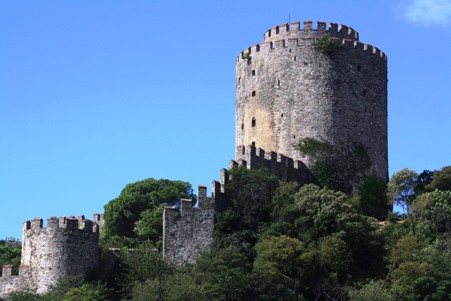
Part of the Rumeli Hisarıto fortress built to cut off Constantinople by sultan Mehmet / Mehmed the Conqueror. Built in just 4 months. It's amazing what can be achieved without pesky unions interfering with your ability to amputate the genitals of your workforce. Truth be told, apparently the sultan wasn't such a bad guy. The fortress symbolises the demise of Byzantine Constantinople. After capturing Constantinople, Mehmet went against fashion and not only spared the residents but encouraged them to stay.
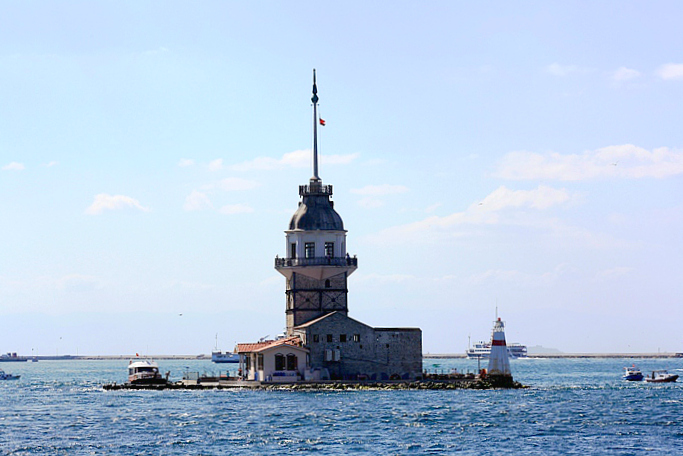
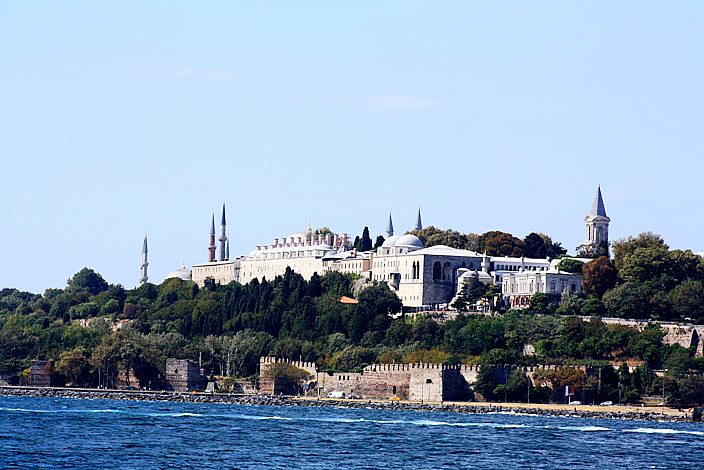
Maiden's Tower where the Bosphorous, Sea of Marmara and the Golden Horn come together below the Topkapi Palace. Originally a wooden structure built in 1110, destroyed by earhquake, burned down and now as V4.0 it's a restaurant.
The Topkapi Palace from the Bosphorous perspective.The Palace was started by Mehmet - he of the Rumeli Hisarito fortress fame after his conquest of Constantinople. It was the centre of the Ottoman Empire from 1459 until the mid 1800s when later sultans decided that some jazzy digs down on the water's edge would be more in line with their westernising tastes.
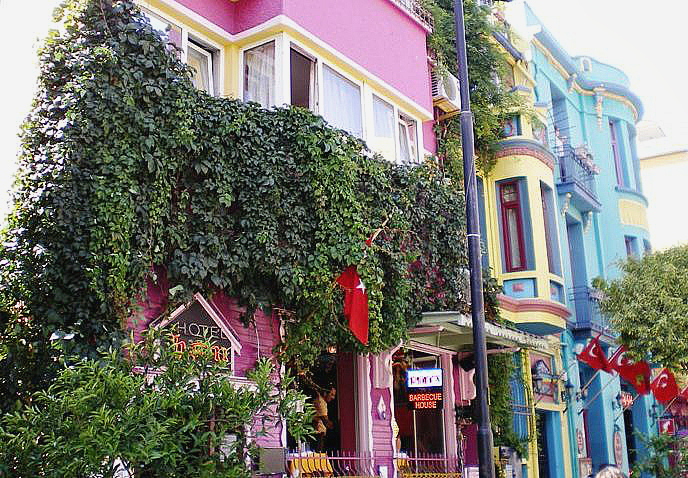
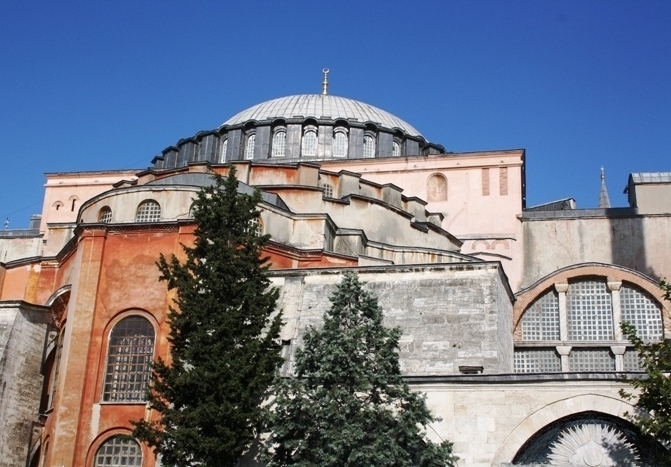
Apartments, somewhat reminiscent of San Francisco, behind the Hagia Sophia
St Sophia, variously Santa Sophia and Hagia Sophia. Dedicated in 360 it's been an Eastern Orthodox cathedral, basilica, mosque and now a museum. It sits between the Topkapi Palace and the Blue Mosque.
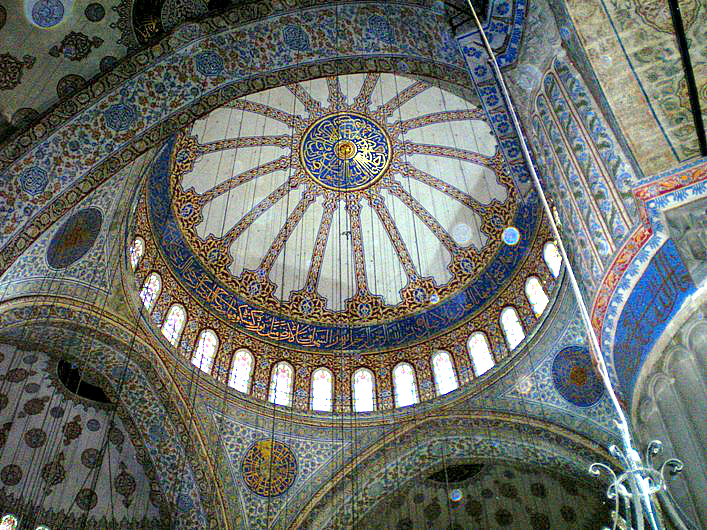
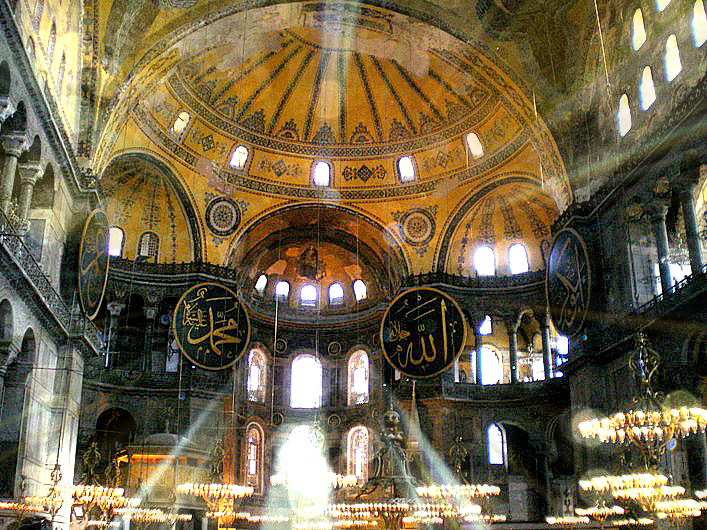
The Hagia Sophia's insides, under the main dome. A riot of dimly lit mosaics and festooned with large, low-hanging but inornate candelabras. Not as low-hanging as the photo may suggest - they're really about 3 metres from the floor.
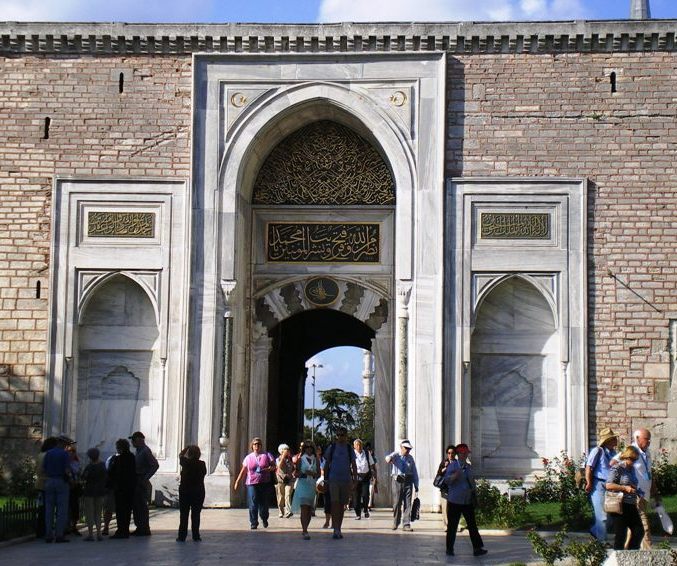
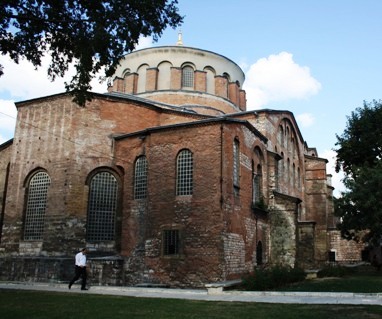
Topkapi Palace entrance gate which is behind the Hagia Sophia.
Began in 1459 by Sultan Mehmed II, the conqueror of Byzantine Constantinople, the palace complex consists of
four main courtyards and buildings that, at their peak, were home to 4,000 people. The fourth courtyard includes the Circumcision Room dedicated to
the circumcision of young princes. BTW - I don't recommend the calamari rings at the Palace's cafe.
The Palace has been the home of some interesting characters during its life as the centre of the Ottoman empire. Sultan Ibrahim 1 "The Mad" (circa 1615) was likely the most colourful. Locked in a cage until his succession as sultan at 23, as was apparently the custom for sultan's sons (those that weren't murdered by their fathers as a means to control who took over), The Mad could likely retrosepctively claim child abuse as a defence for his bizzare behaviour.
Maddy had performance issues with his harem of 280 concubines. He was also a Chubby Chaser - his favourite consort was a 150kg Armenian heifer, Sechir Para ("Sugar Cube"). He found her (as if she'd be hard to miss) after having a cow's girl-parts cast in bronze and having minions and flunkies search the empire for a woman who was equally blessed. Sugar Cube was mis-named. Following a bit of her spiteful gossip, Maddy had all of his other concubines tied in sacks and tossed into the Bosphorous.
Main entrance of the Palace and the rear of the Hagia Sophia with the Blue Mosque in the distance from Google Earth.
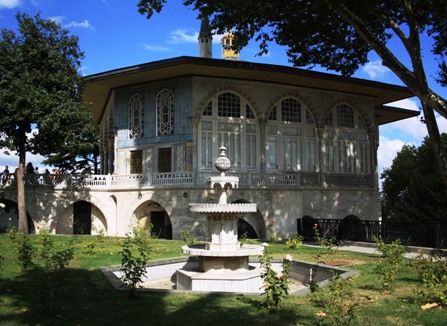
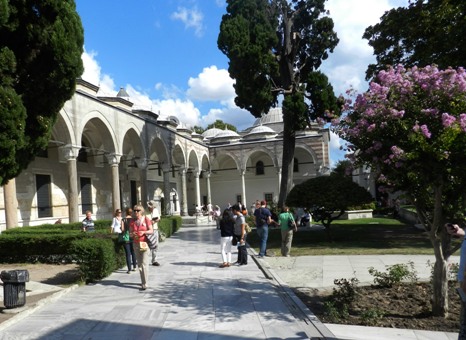
Inside the Topkapi Palace grounds in the 3rd courtyard.
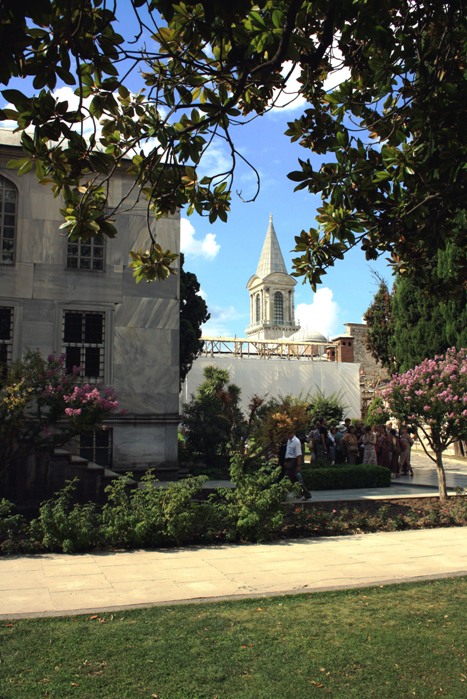
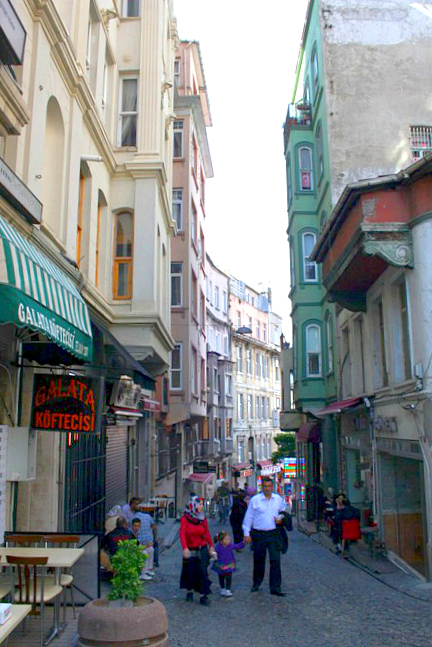
(Above, right) Typical street of old(ish) Istanbul in the Beyoglu district near the Galata Tower. 19th century buildings as opposed to the really old Istanbul of the Fatih District. Far more appeal than the very crowded sprawl of the surrounding modern suburbs. The best of Istanbul is definitely the Byzantine and Ottoman-era parts and the Bosphorous shoreline.
Gallipoli
Bucket List Rating 




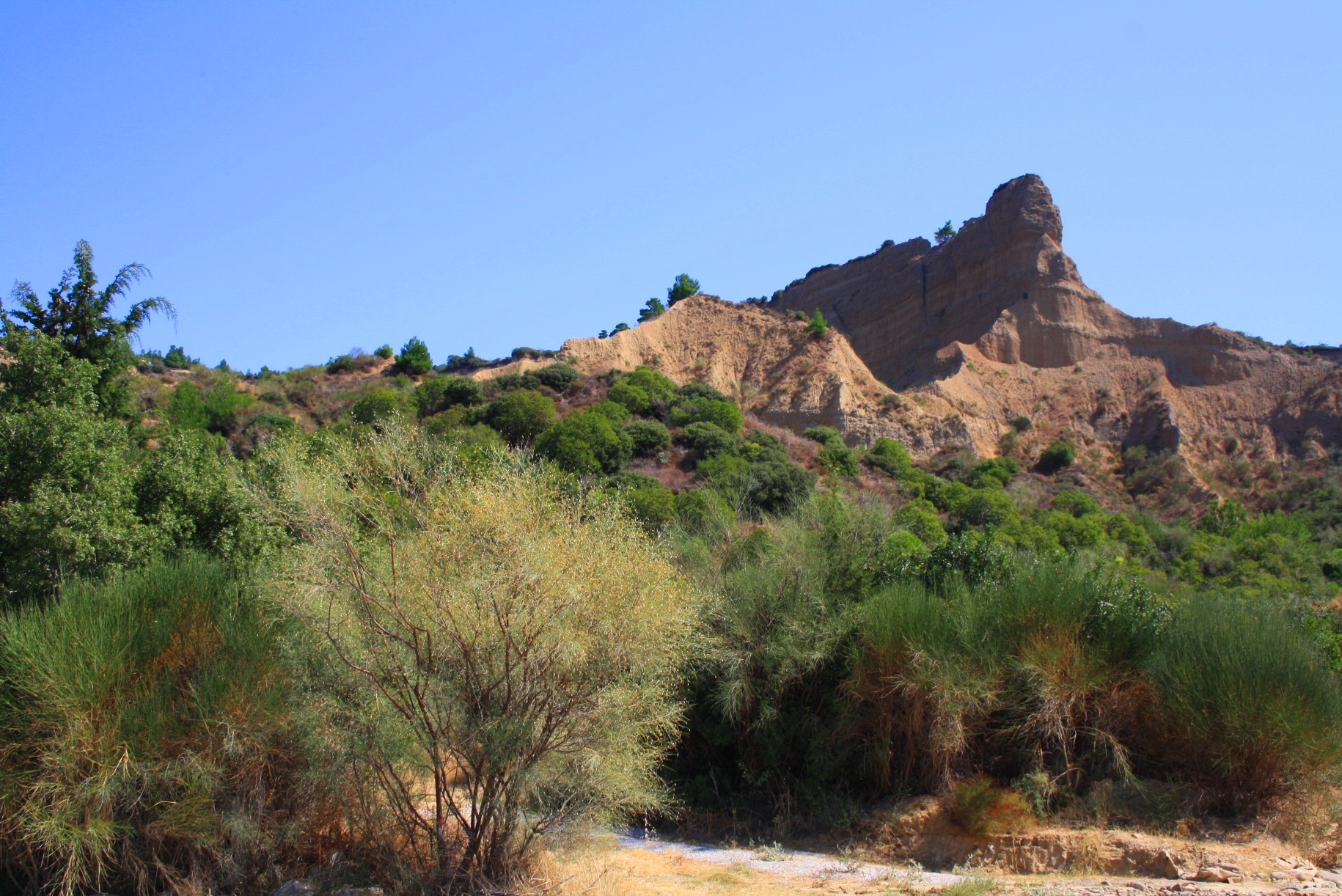
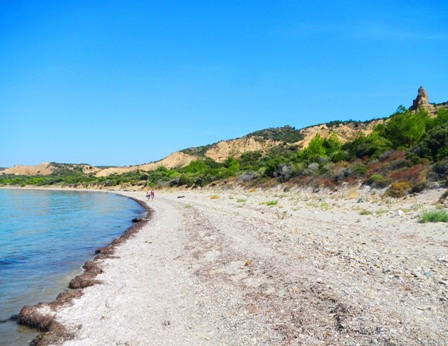
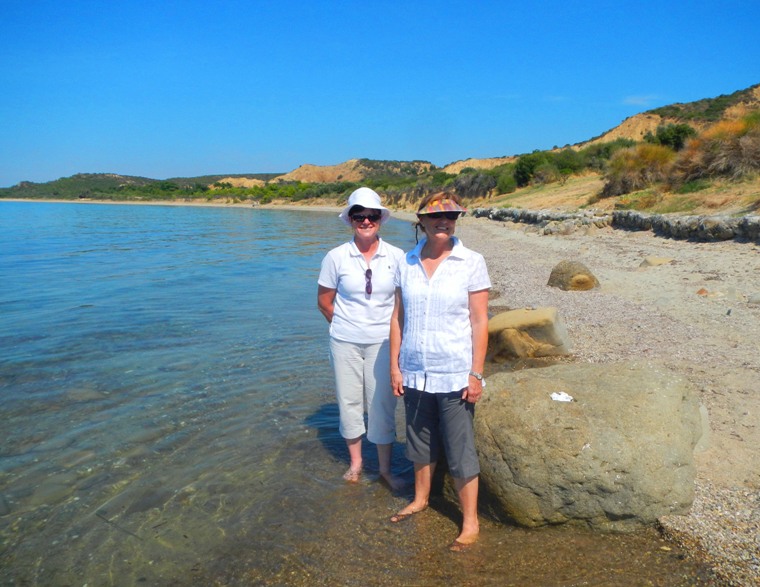
North Beach, taken from near Anzac Cove. The North Beach area, and the ranges beyond leading up to the heights of Chunuk Bair is the area that became known as Anzac from the landing in April until the evacuation of December 1915. The prominent point on the ridge is The Sphinx.
Thankfully Gallipoli was of interest to locals, Aussies and Kiwis almost exclusively, so the sombre history wasn't insulted by the sight of thousands of under-clad, over-fed, pink & red and typically tattooed tourist throngs who we'd often come cross in great numbers in later parts of the tour, and who made us Ruins look half respectable in comparison.
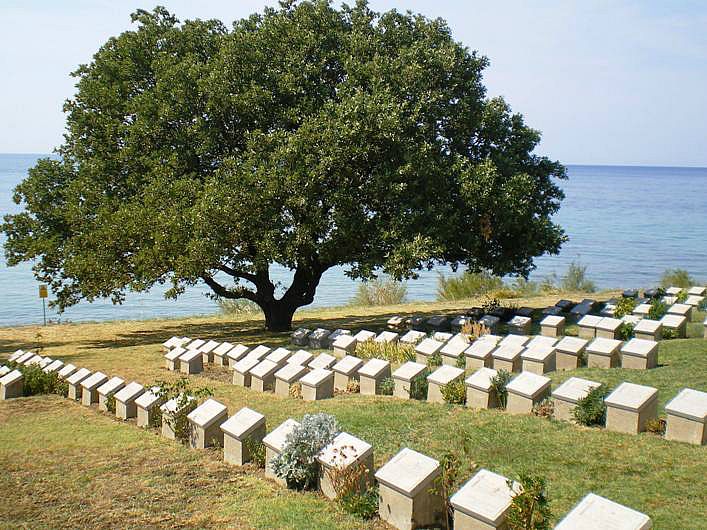
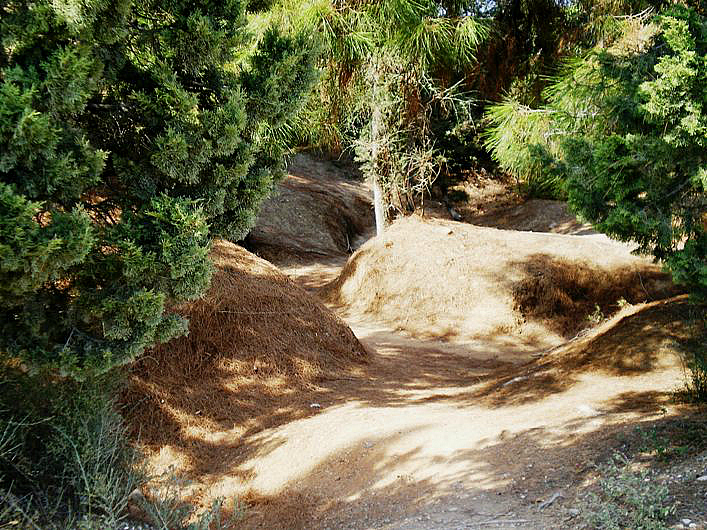
Memorial markers at Anzac Cove. The ages shown on most of them is a sobering reminder of how it's young blokes who get to do the fighting on behalf of the old bastards who sent them there. "How well I remember that terrible day When the blood stained the sand and the water And how in that hell that they called Suvla Bay We were butchered like lambs at the slaughter" Eric Bogle, The Band Played Waltzing Matilda.
Remnants of Turkish trenches on the heights that overlook the whole peninsular.
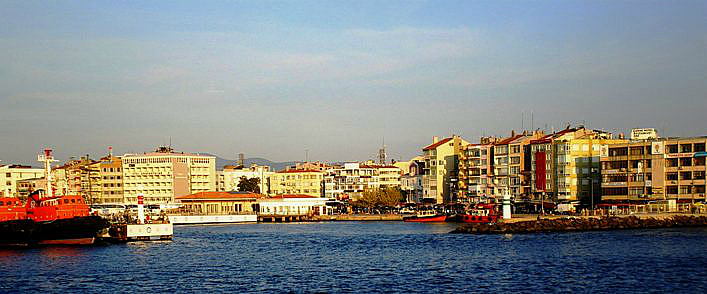
Cannakale from the Dardanelles ferry.
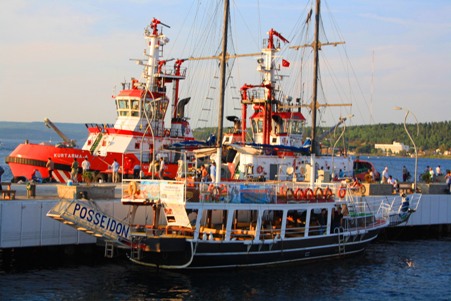
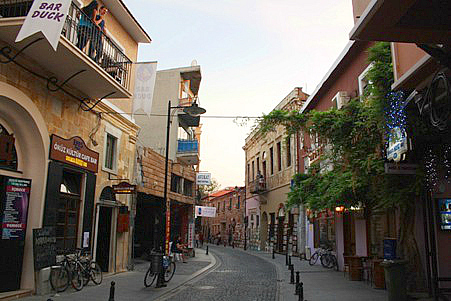
Cannakale, a pleasant waterfront town and over-night stop on the Dardanelles oppposite the Gallipoli peninsular. The Dardanelles is a 61km strait connecting the Aegean at Gallipoli to the Sea of Marmara, at the opposite end to Istanbul.
The street scene outfront of the Kervansaray Hotel - old style accommodation, but in a perfect position. Comments on Tripadvisor are generally on the money. The Aussie and Kiwi tourist influence in the town can sometimes be obvious - the vibe at a nearby eatery was pure suburban RSL club, minus the pokies.
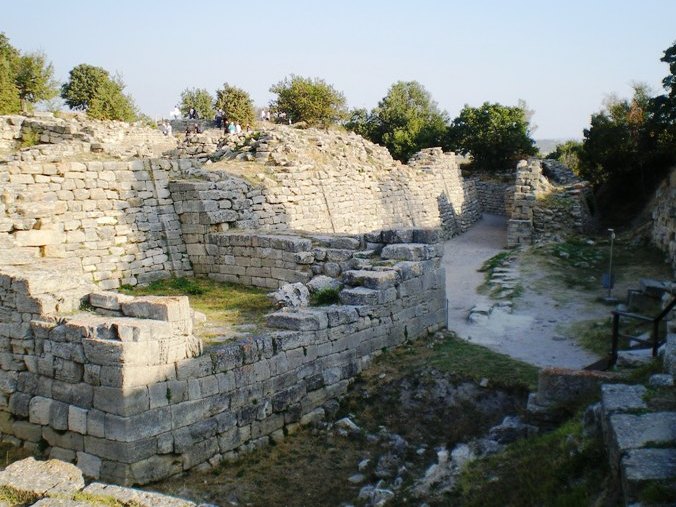
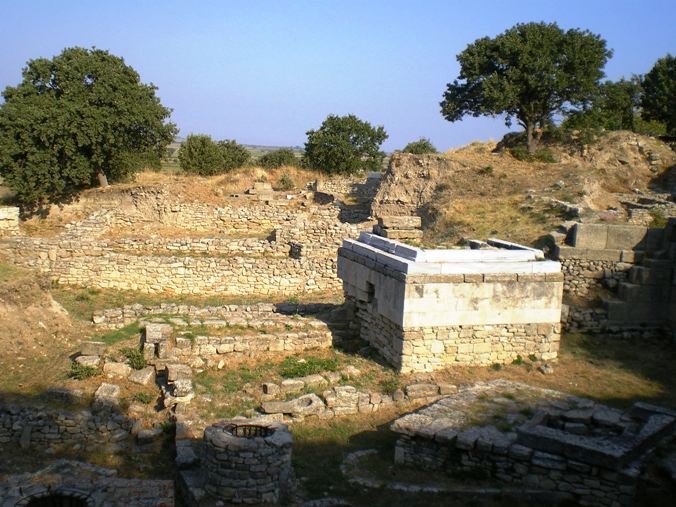

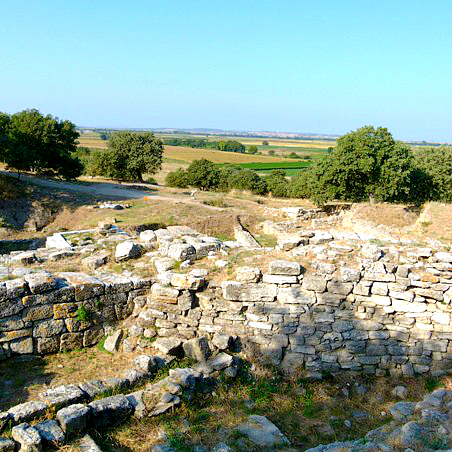
Troy. 3 spunky blokes pose for the "Sexy Men Of Troy" calendar due out soon.
This isn't all of Troy. It's most of Troy. Scattered remnants in a field, most of what's left is still buried in multiple layers of multiple versions of the city. To excavate to earlier levels means digging through the later structures, so it's been mostly left like this. The Dardanelles which lapped up against the city in its heyday has retreated back several kilometres. It's worth a visit - the highway passes nearby.
Pergamon
Bucket List Rating 

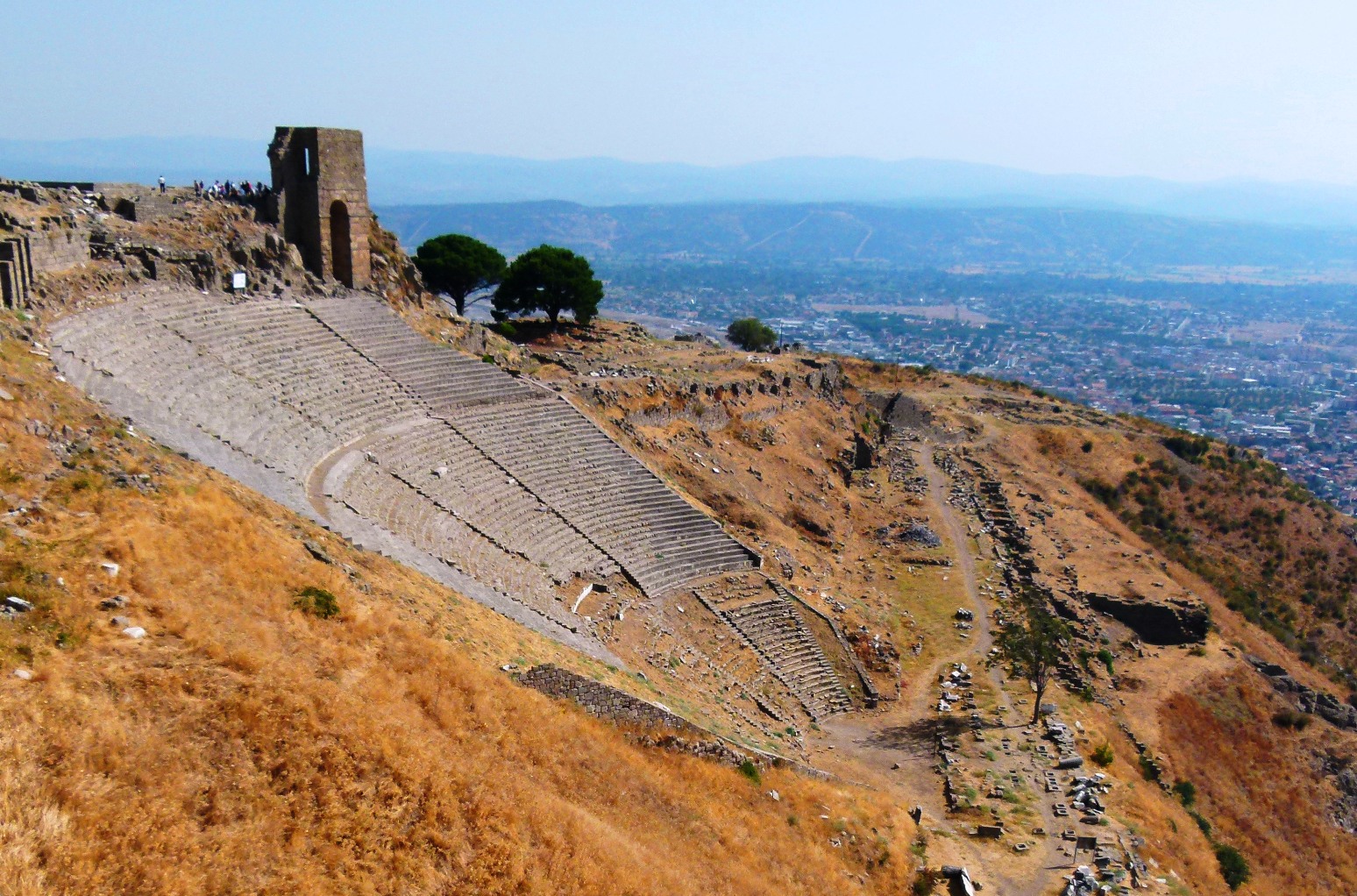
Pergamon, aka Pergamum, an ancient Greek city that became the capital of the Kingdom of Pergamon during the Hellenistic period 281-133 BC, clear evidence that the Greeks at some point in history possessed a work ethic.
Set on a mountain top, reachable by chairlift and overlooking modern Bergama, a large town that, from the bus, looked like it had its charms. If we hadn't had such a long drive in front of us we would've stopped for a poke arond the town. 'The archways show the tidy restorations that have been completed on many sections of the site.
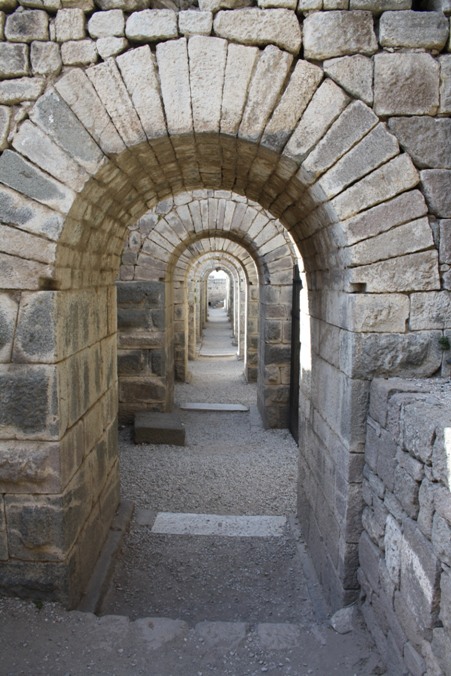
Izmir
Bucket List Rating 
Izmir. The third largest city in Turkey (pop: 2.8 million) and a 2 night stop on the drive down the coast from Cannakale to Kusadasi. A pleasant bay-side waterfront but the surrounding hills and coast are covered with housing and apartment complexes squeezed together without a lot of breathing space. Urban sprawl seems to be its main characteristic, it has a surprising sister-city relationship with Tel Aviv, its population has had a very high proportion of foreigners where Turks have been a minority and it is a centre of Turkish secular sentiment.
2 days spent in the pool at the upmarket Swissotel hotel and night time strolls along the waterfront away from the crowds were nice interludes on the long drive.
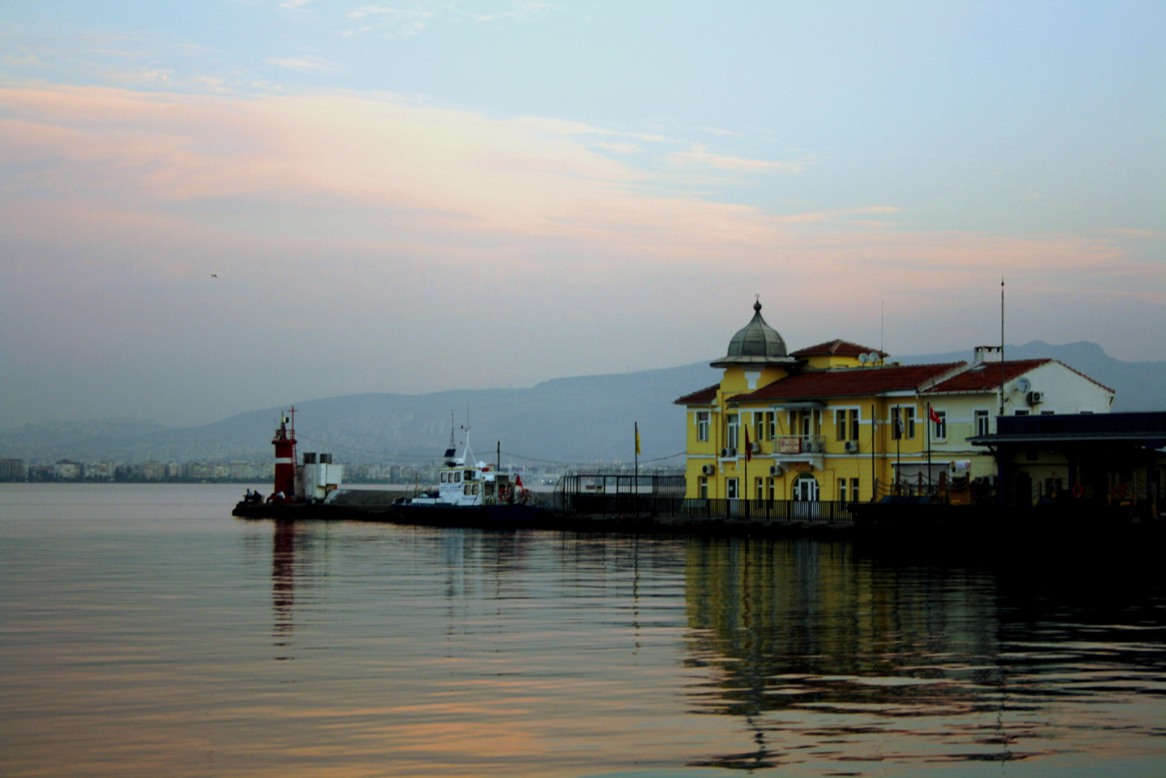
Ephesus
Bucket List Rating 


Ephesus. An ancient Greek city, and later a major Roman city of more than 1/4 million. The main attraction is its Temple of Artimis (550BC), one of the 7 Wonders Of The Ancient World, of which 1 column is standing. Rather, the Library Of Celsus and the huge amphitheatre are the 'wow' moments.
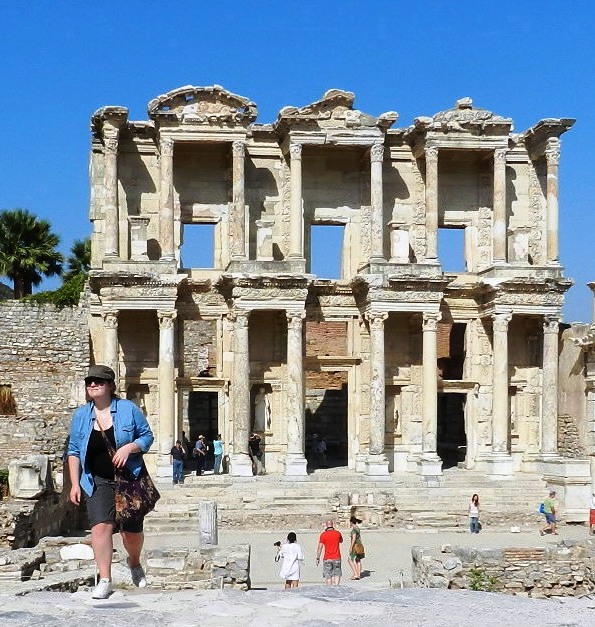
The Library Of Celsus, the facade is reminiscent of the Treasury at Petra in Jordan. Completed by the Romans in 135AD, built to store 12,000 scrolls and to serve as a monumental tomb for Celsus (Roman Senator Tiberius Julius Celsus Polemaeanus who you'll recall from high school histroy lessons).
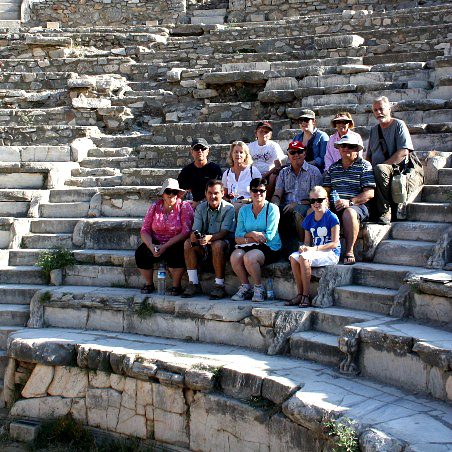

About 2,000 years ago it was Roman arseholes that were sat on these seats.


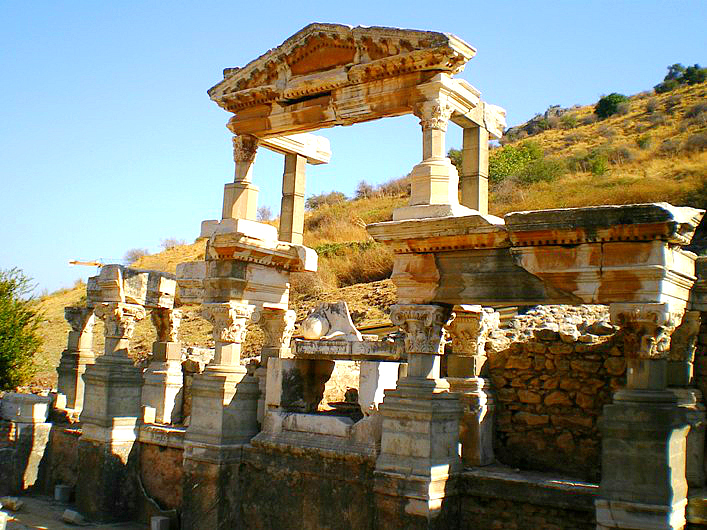
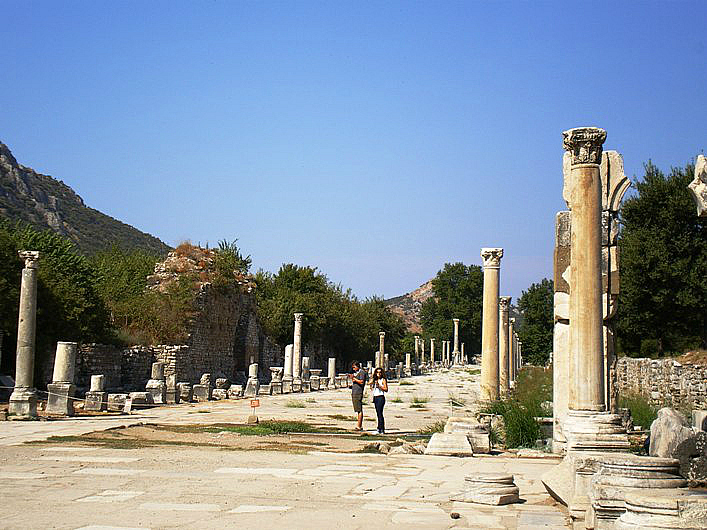
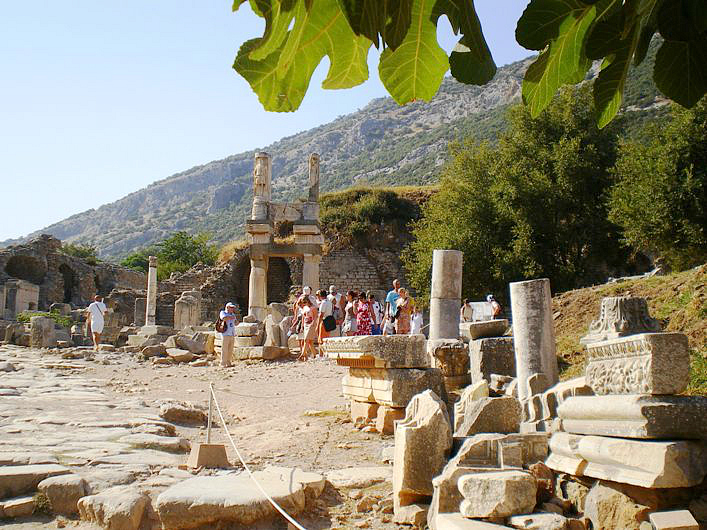
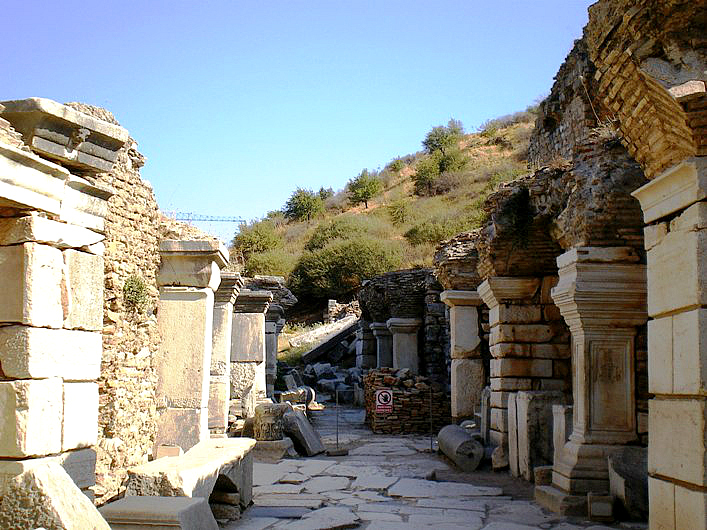
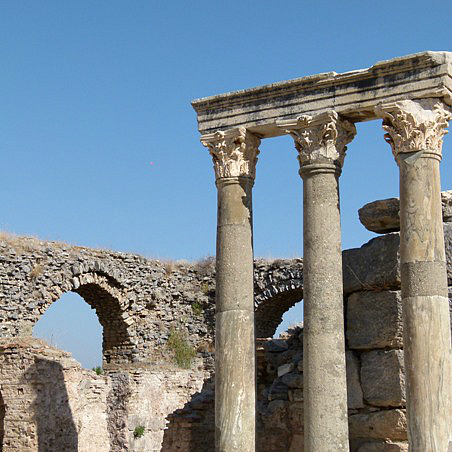
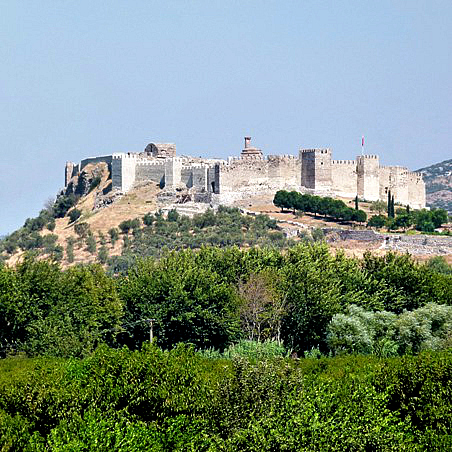
Random ruins, Ehpesus. Outside the main site, scattered amongst the grass and bushes in farmers' fields along the narrow entry roads were what were obviously old stone building blocks and remnants of walls. There is so much ancient history spread across the Meditteranian that such things are unremarkable. Blows the minds of those of us from the New World where something 200 years old is worthy of note. I guess if we don't protect the 200 y.o. artefacts they won't get to be 2,000 y.o. artefacts.
The Grand Fortress on a hill behind the nearby town of Selcuk. No visitor access, Abdullah didn't say much about it and bugger all information on the internet. Just an ABC (Another Bloody Castle)
Kusadasi
Bucket List Rating 

Kusadasi. A propsperous port town that obviously thrived on the tourist trade. Large trawlers docked in the bay suggest its economy is more diversified than just tourism. Set in rolling desert hills it's got a feeling of space despite the bustle in the centre of town with souvenier shops and cafes crowded together. But, with a pleasant vibe. While the merchants are keen to get your cash there's no in-your-face hassle, and it was a lot quieter than I expect it can be. Cheap and frequent shuttle buses make it easy to get around. With Samos being only 2 km away across the bay, it is an easy access point to Greece. It's also the stop off for the cruise liner passengers to be bussed inland to Pammukale for day trips to the travertine terraces.
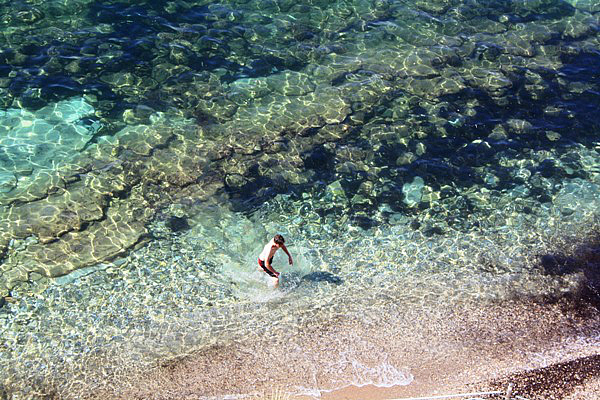
Sean's first pre-tan dip into the Aegean, from the hotel room balcony. The Charisma Hotel is well located on steep ground down to the edge of the bay, with panoramic views across the water and a walkable distance, if you're keen, into town. The hotel had pretensions of 4 star, but their service delivery won't justify it - worn carpet in the hallways, charging for water and trying to charge for coffee. A quiet word from Abdullah about how miserly that is and the buggers had large fruit platters delivered to each of our rooms by way of apology. A young lady on reception on the other hand had her on head straight...on admonishing us for carrying cheaper supermarket booze back through the lobby as it was against management policy; she helpfully advised that we should smuggle it in in our backpacks instead.
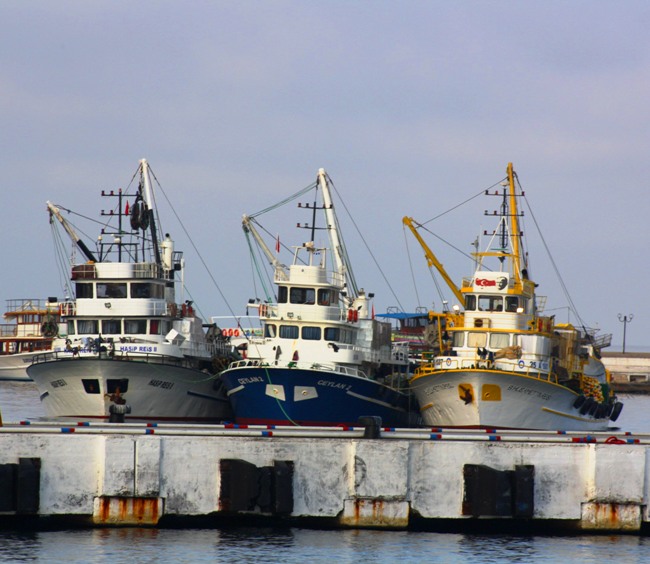
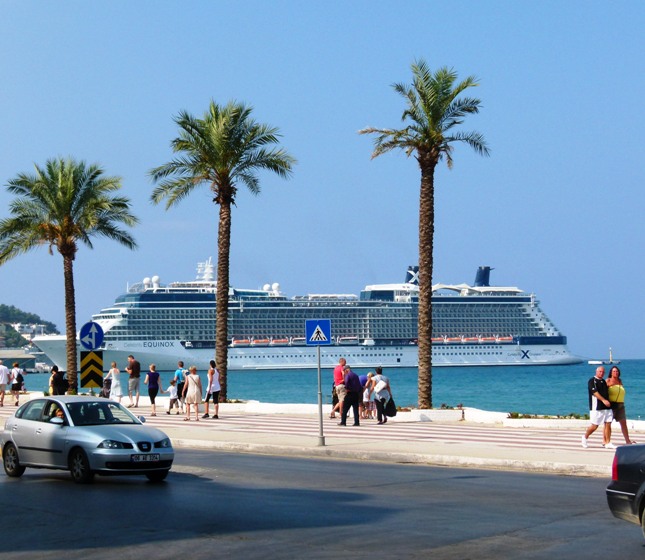
Fishing trawlers and big cruise ships provide clues to Kusadasi's economy. Fish stocks are plummeting, but a plentiful supply of tourists remains even though numbers were down due to the GFC.
Pammukale
Bucket List Rating 


Pammukale. Terraces are made of travertine, a sedimentary rock deposited by water from hot springs. Calcium carbonate deposited by water eventually hardens into travertine. Can you believe they used to park the tourist buses on these formations? Access is now well controlled thankfully. Hieropolis ruins of baths, library and gymnasium are adjacent. The hot springs have been used as a spa since the 2nd century BC. The large necropolis is filled with the stone sarcophagi of those for whom a spa was insufficiently recuperative.
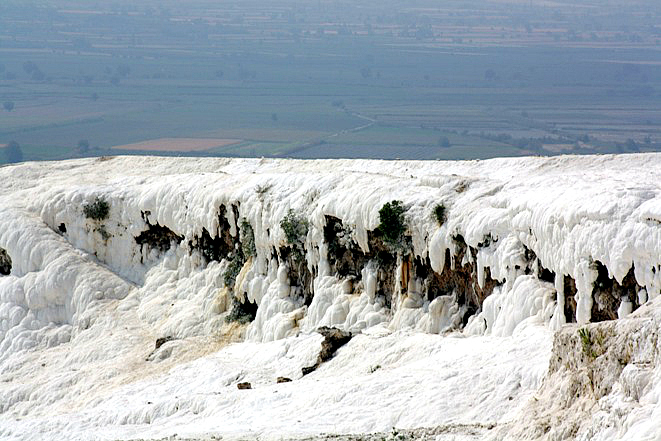
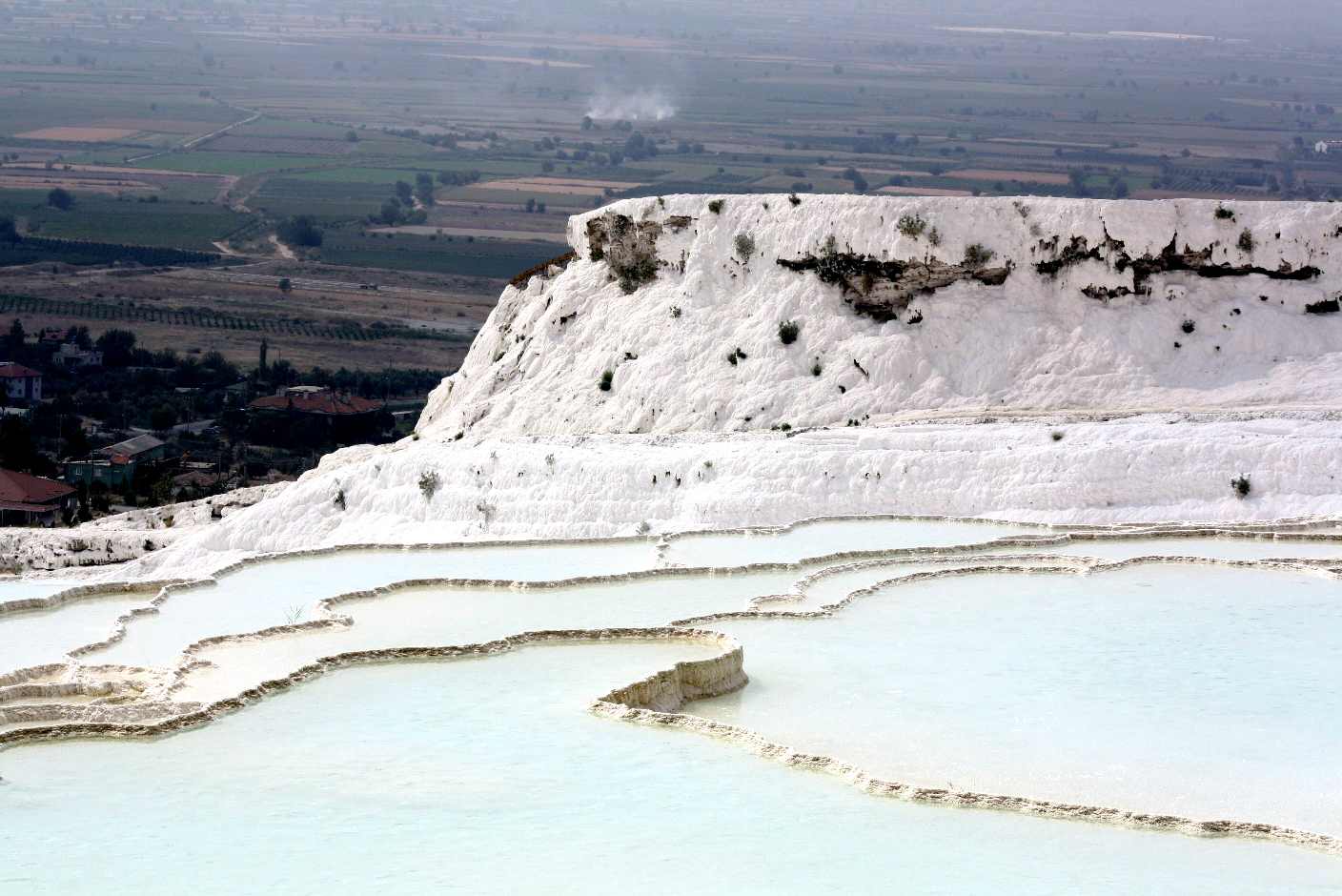
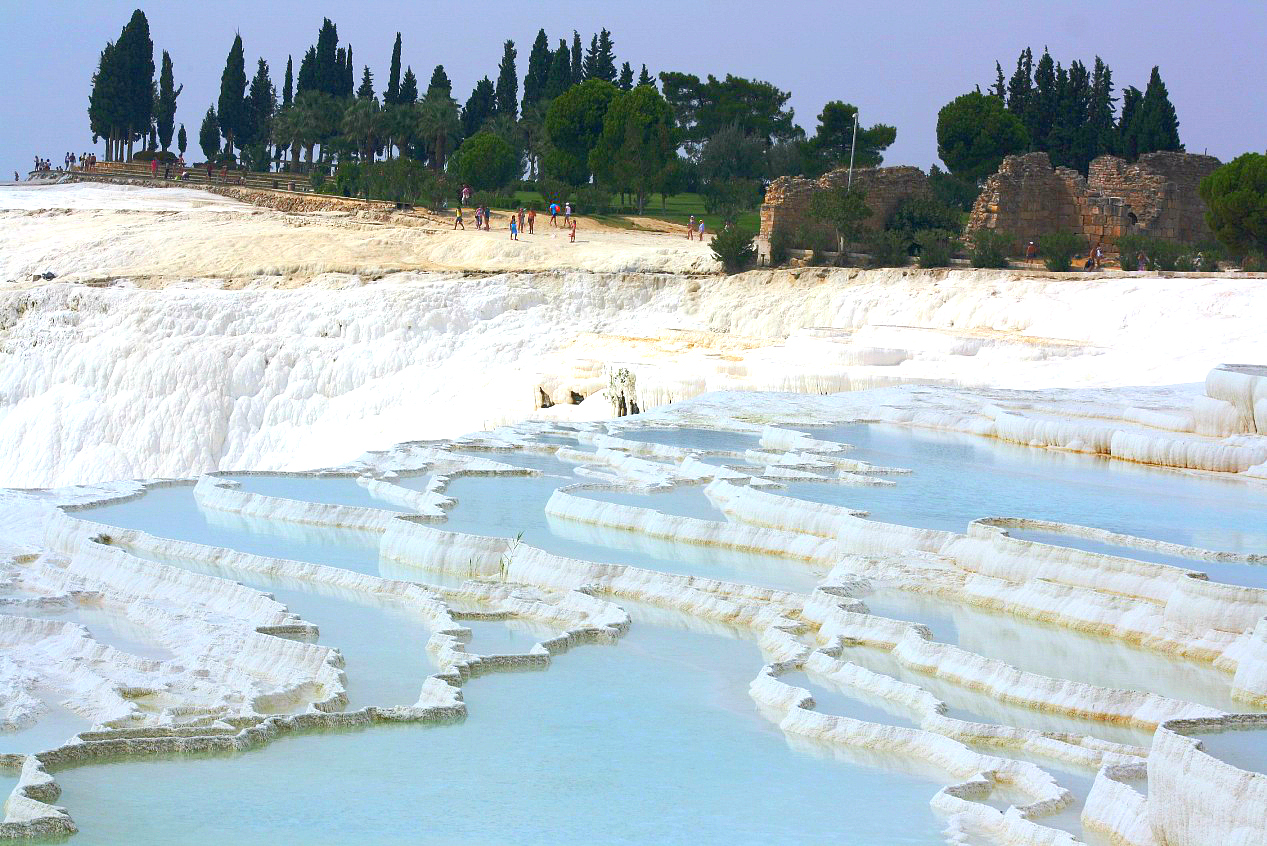
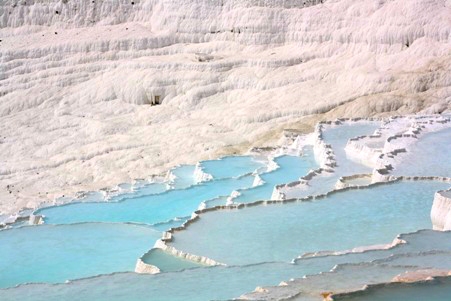
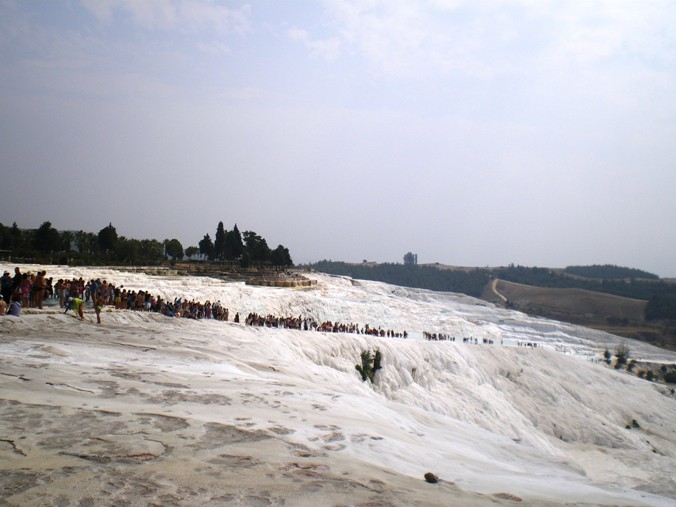
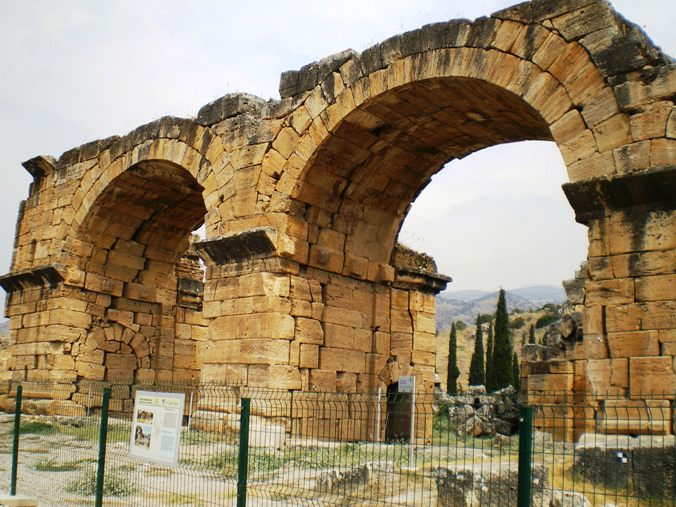
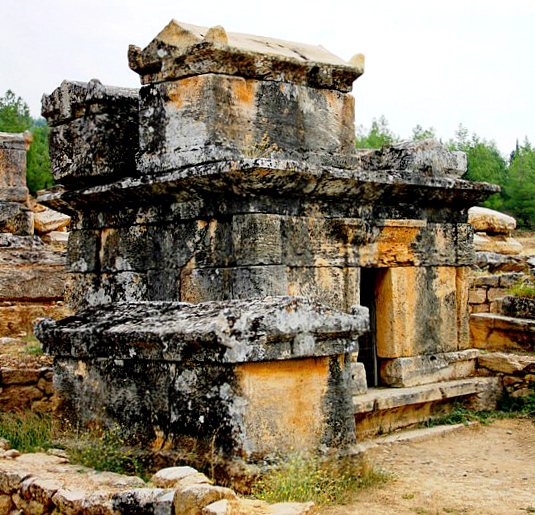
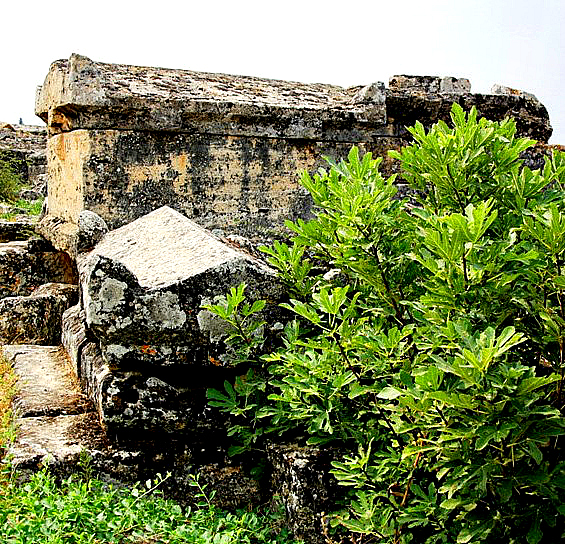
Hieropolis necropolis, some 2,000 tombs stretching along a 2km walk up to the travertine terraces and the ruins of Hieropolis itself.




